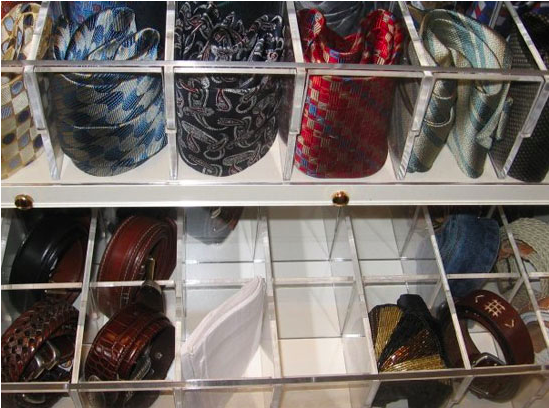Everyone loves going on vacation, but with the
average cost for a family around $4,580, it’s hard not to stress about the
price tag. However, with some frugal planning there are ways to save
hundreds, or even thousands of dollars on your next trip, leaving you relaxed
enough to fully enjoy it.
Here are 25 tips that will help you save big
money on your next vacation:
1. Many tours, museums, and even restaurants
offer discounts for students, teachers, AAA, military, and AARP members, so
bring your identification cards and always ask!
2. Stay at a hotel that offers free breakfast.
Eating a good meal in the morning will get you ready for a day of sightseeing
and save you money on one meal a day. When you search for hotels on sites
like Hotels.com, Booking.com, or Priceline.com, you’ll be able to see which
establishments offer complimentary breakfast. However, sometimes they just roll
out coffee and cereal and call it breakfast, so drop them an email to ask how elaborate
the meal will be.
3. The majority of air travelers want to fly on a
Friday or Sunday, so you’ll find the best deals for flights if you fly on a
Tuesday, Wednesday, or Saturday. Flights at the crack of dawn,
at dinnertime, or red-eye flights are cheapest. Airlines release their new
weekly fares on Mondays, so on Tuesday by 3 pm competitors have released their
deals, making it the ideal time to search for tickets online. Studies show that
the cheapest time to book is 49 days before your departure, or 81 days ahead of
time for international flights.
4. Before you book your airline tickets find out
if they charge for checked bags. Some airlines allow the first bag for free,
like Southwest, while others charge up to $75 or $100 for overweight or
international baggage fees. Bring an empty carry-on that you can fill with
souvenirs so you won’t get hit with an excess baggage fee on the way back.
5. If your vacation destination is within a few
states, consider traveling by train. It’s a great way to see the country, less
expensive than flying and Amtrak has modern, comfortable sleeper cars.
6. Searching on travel aggregate sites like
Kayak.com, Hotwire.com, and Expedia.com are common place these days, but also utilize
reverse searches. If you are flexible with which days you can travel, a lot of
cheaper airfares may open up for you. There are several travel search engines
that will allow you to search by destination without putting in a hard date.
Adioso.com
Flexible searches based on dates, locations, and
connections.
AirFareWatchDog.com
You can see the top 50 fares for different
destinations.
Kayak.com/Explore
Search where you can go anywhere in the world
based on a certain budget, continent, or even what activities once you get
there.
Also remember that Southwest and Allegient airlines
don’t show up on any Internet travel sites, so double check with them directly.
7. Souvenirs, nick nacks, and t-shirts are all wildly
overpriced in touristy areas, so take a quick photo of what you like and buy it
later via the Internet.
 8. Rethink the rental car. A lot of tourists have
the attitude where they love renting a car and navigating the city or country
they’re in. I’m not one of those – I prefer to sit back and let someone else
deal with traffic while I observe, take photos, and watch, but it’s up to you. But
people frequently rent a car and then hardly use it. Walk, utilize your free hotel shuttle, or
take public transportation to save money
8. Rethink the rental car. A lot of tourists have
the attitude where they love renting a car and navigating the city or country
they’re in. I’m not one of those – I prefer to sit back and let someone else
deal with traffic while I observe, take photos, and watch, but it’s up to you. But
people frequently rent a car and then hardly use it. Walk, utilize your free hotel shuttle, or
take public transportation to save money
9. If you do get a rental car, don’t double up on
insurance. Rental agencies love selling you additional insurance, but it’s
usually unnecessary. Check your homeowners and auto policy ahead of time to see
if they cover rental cars. Some credit cards even offer automatic insurance if
you pay with their card.
10. Whenever you show up at the airport, hotel,
or rental car agency, ask for a free or low cost upgrade. The worst they can
say is “no,” but you might be surprised what they can offer!
11. Book a hotel room with a small refrigerator
and stockpile water, fruit, and snacks. This will help you to save on impulse
purchases at tourist sites, restaurants, or from the expensive minibar.
Speaking of the minibar, if you do eat a $10
candy bar or drink a $14 beer in a moment of weakness, hit the local general
store and buy the same items and replace them before you’re charged.
12. When vacationing outside of the U.S., always
negotiate prices when buying something on the street or in a shop. Often times
you can end up at 60% the first quoted price, but we often forget negotiating
is an accepted and encouraged part of many cultures. Just don’t be rude about
it and remember that most people abroad make a very humble living.
13. Everything is more expensive by the beach, so
remember that the exact same quality meal or hotel can usually be found for
30-50% less a few blocks inland.
14. Exchanging money at the bank will get you the
most accurate exchange rate and fewer fees than at your hotel. Never exchange
money on the street!
15. If you aren’t going to spend a lot of time in
your hotel room, booking a 2 or 3-star hotel will save you a lot of money.
Hotels.com makes it easy to see pictures and read reviews so you can get a
clean, comfortable room for less than 5-star prices!
16. If you’re bringing the kids on vacation,
consider getting a suite, bigger room with two double beds, or have the hotel
bring up a foldout cot so everyone can stay together. The savings will be worth
it!
17. When traveling abroad, remember to turn off
the cell network on your smart phone, where international roaming charges can
add up alarmingly fast. Instead, take advantage of free Wi-Fi offered at
hotels, restaurants, and tourist sites, using apps like WhatsApp, Viber, and
GoogleVoice to make calls, text, and browse the web.
18. Before you book airfare, hotels, theme park
tickets, or even restaurant meals, check the companies’ Twitter and Facebook
pages because they often post otherwise-unlisted discounts on their social
media pages. Also check on their website, which lists unadvertised specials and
deals. You can even call their reservations phone number and speak to an agent
about getting the best deal available, but then go and book it online to avoid
the $25 -$40 booking fee.
19. If you have young children bring your own
stroller to amusement parks, where it could cost $15 a day to rent one.
20. Only drink water at restaurants, where a few
sodas or iced teas can add $10 or more to each meal.
21. Spend one day away from the expensive
attractions. You’re paying for that hotel swimming pool… use it! Spend the day
at the beach, zoo, or a nearby museum.
22. Book a hotel that offers free airport pickup
and drop off.
Getting to and from the airport can add up in a
big way, so check to see if your hotel offers free shuttle service when you
book it. But be careful – some hotels list that they have airport shuttles
under the ‘amenities’ section or description, but then later try to charge you
for it. You can clarify by sending an email to the hotel (along with other
questions.)
23. Frequent flyer miles and points:
Always register to earn frequent flyer miles and
keep track. Confirm with the booking agent and at the check-in counter to make
sure they credited you your miles, and once you get home check to make sure they
were registered.
Use a credit card that offers award points of
frequent flyer miles. Some of them are great but only give you miles on one
airline. I have a Visa Blue Sapphire card that allows me to accumulate points
for all flights, hotels, rental cars, or even restaurant meals. I run all of my
bills through it but pay it off every month, and the result is that I get at
least two free flights every year.
24. Expand your vacation – for the same price!
Most people don’t realize that you can book multi
city flights with long layovers – even up to a week. So if you flight goes New
York to London to Madrid, you can ask the airline to schedule the “layover” for
London for 4 days. That gives you a built in extra vacation destination for the
same cost! I’ve found you probably want to call the airline to reserve this
kind of flight, as it’s hard or impossible to book online.
25. After you book your flight, call back the
next day, within 24 hours, to check if the fare went lower. Most airlines have
a policy where you can get a refund or credit if the price goes lower within
that timeframe. Also, thanks to the new Department of Transportation rules for
airfare bookings, consumers can put fares on hold for up to 24 hours,
cancelling or changing the ticket with no penalty.












